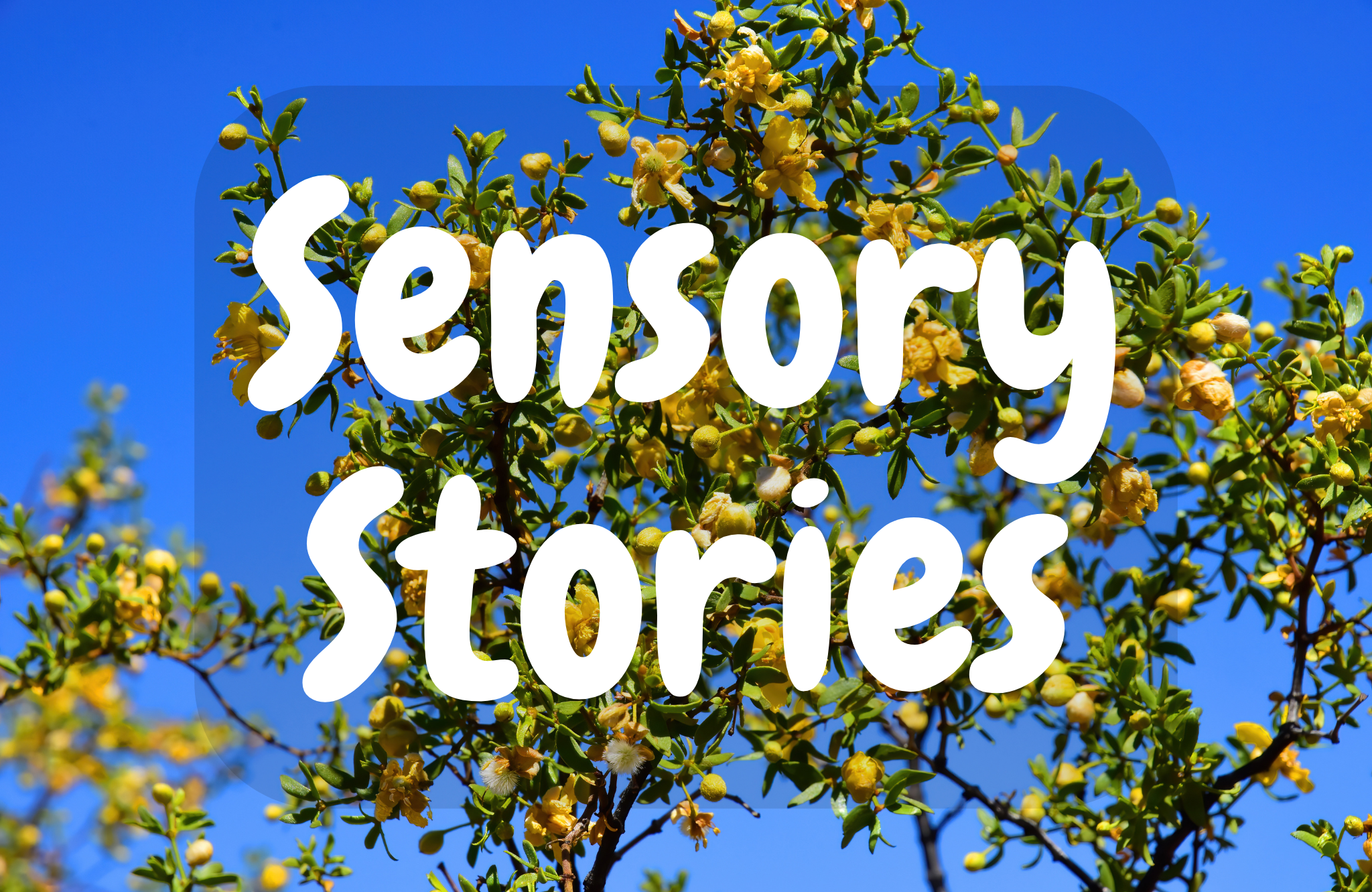Sensory Stories: Awakening Memories with Smell, Sound, and Touch

Sensory Stories: Awakening Memories with Smell, Sound, and Touch
January 2, 2025 by Taylor Studios
Early last week, I excitedly rushed to my doorstep to receive a package.
The contents? Some dead, dry stems from a shrub—more specifically, a creosote bush.
Creosote bush grows throughout the Sonoran, Chihuahuan, and Mojave deserts. It’s not very unusual looking, and its flowers, while attractive, are hardly the most dazzling. It can’t be used for culinary purposes, and it isn’t prized in the nursery trade.
So why did I send away for this small bundle of twigs?
The answer was clear before I’d even removed the damp paper wrapping. It was a muggy morning after a heavy thunderstorm—the perfect time for this plant to put on a show. Not with its looks, but with its smell.
If you’ve spent time in the desert southwest just before a rain, you’ll know the scent of creosote bush. It comes from an aromatic resin in the plant’s waxy leaves. It perfumes the humid air as soon as rolling thunderclouds approach, signaling that the wild creatures of the desert are about to show themselves. To me, it smells like celebration.
Smell is a powerful sense, and in human beings, it’s closely tied to our memories.
On many occasions, I’ve witnessed people of diverse ages and backgrounds immediately responding to smell. A whiff of orange blossom water might remind someone of a carefree childhood playing among the citrus gloves of Florida. The aroma of crushed cloves could instantly evoke memories of a walk through a spice market in Indonesia—even if it happened 30 years ago.
Our senses play an incredible role in engaging with the world. The more that we use them, the more we seem to understand. And yet, a significant number of museum exhibits seem to limit visitors to the use of sight.
It is often said that human beings are “visual creatures.” For many people, sight is one of the quickest ways to receive and process information. But it is not the only way, nor is it always the most reliable or informative. A person without the ability to see could still enjoy, appreciate, and understand the magic of creosote bush just as much as a person with excellent eyesight.
At TSI, we strive to incorporate multi-sensory experiences into our exhibits. We have replicated aromas ranging from ripe pawpaw fruit to the inside of a decomposing log. Touchable models introduce visitors to the rough texture of a shagbark hickory tree, or the smoothness of a painted turtle’s shell. Immersive soundscapes call attention to the insect chorus of a forest in late evening, or the heart-pounding rumble of approaching floodwaters.
As exhibit designers, we value the “tried and trusted” use of visual information. But forging connections, sharing facts, and making lasting memories extends far beyond the use of sight. We not only hope to make our visits fun, educational, and inclusive for people of all backgrounds and abilities. We also aim to challenge our existing perceptions and experiences by exploring nature, history, and culture through all that the varied human senses have to offer. This paves the way for engaging discussions and new understanding of our world.
What are some of the sights, sounds, textures, smells, and other sensations that you would want visitors to experience as they explore your favorite places?
TSI enjoys working with clients who aim to capture the sensory experiences of their sites. Our exhibits have the power to help make those sites accessible, understandable, and enjoyable for all.
My heart is thankful for the memory of creosote bush.
What’s your sensory story?